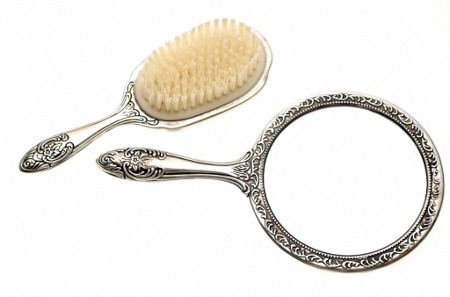Silver Plating
Silver Electroplating Guide

Silver plating refers to the process of
covering a conductive surface with silver to prevent it from corrosion while adding a lustrous shine to
it.
 Why metal silver is
used? Why metal silver is
used?
Silver is a white colored semi precious metal
with an oxidizing property. Due to its property of high electrical conductivity it is used in electronics and
semiconductor industries. Silver is also an excellent conductor of heat and offers great solderability. It is
malleable and has a high degree of Lubricity. Silver finds usage in bearing surfaces and anti-galling
applications. Being ductile, it may be bent into any shape and is hence preferred by jewelry and flatware
industries for its decorative appeal.
Thus, silver acts as an economically
beneficial metal that may be put to good use for a relatively cheaper price as compared to other precious metals
like gold or platinum.
Types of Silver plating
Silver plating may be of various types
ranging from Matte plating to Bright and Semi-Bright plating. While some plating may be done without Chromate,
others may use Chromate. Pure silver plating is also possible.
Different options of Silver
plating
Many silver plating companies offer the
facility of industrial plating on different electrical components, bus bars and bearing surfaces. Some companies
offer corrosion resistant cyanide coating devoid of chromates in order to plate various ferrous and non-ferrous
base metals.
Uses of Silver
plating
· The most
common usage of silver plating is for ornamentation of jewelry, plates, cups, trophies and medals. The
process adds a perfect polish to the surface on which the plating is done.

Alternatives to Silver electroplating
Every method of silver plating provides
slight variations in the techniques followed. These may be classified as under:
- One of the processes involves covering a
solid surface with a metal sheet, and then heating and applying pressure to fuse them
together.
- Some processes may also involve vapor or
sputter deposition under vacuum.
- Brush application with liquid
silver.
- Apart from these, the Tollen's Test method
and Old Sheffield Plate method are other vital methods. The Old Sheffield Plate method happens to be the
earliest silver plating technology, which was modified in the 19th century with the introduction of innovative
techniques like electroplating.
The Tollen's Test method is used to plate
thin layers of silver over different objects like glass etc. The reaction takes place when Glucose/Dextrose is
added to the Tollen's Reagent placed in a glass. Shaking the glass excites the reaction.
Precautions
Proper maintenance must be ensured for parts
exposed to high humidity environments, since porous or cracked silver layer allows rapid galvanic corrosion of
the underlying copper surface. This results in a copper exposure due to flaking of the plated layer and is
referred to as red plague.
| 

